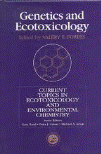Papers in the Biological Sciences

Valery Forbes Publications
Document Type
Article
Date of this Version
2003
Abstract
Very few studies have analyzed the dependence of population growth rate on population density, and even fewer have considered interaction effects of density and other stresses, such as exposure to toxic chemicals. Yet without such studies we cannot know whether chemicals harmful at low density have effects on carrying capacity or, conversely, whether chemicals reducing carrying capacity are also harmful at low density, impeding a population’s capacity to recover from disturbance. This study examines the combined effects of population density and a toxicant (fluoranthene) on population growth rate (pgr) and carrying capacity using the deposit-feeding polychaete Capitella sp. I as a test organism. Populations were initiated with a stable age distribution, and population density and age/size distribution were followed during a period of 28 wk. Fluoranthene (FLU), population density, and their interaction influenced population growth rate. Population growth rate declined linearly with the logarithm of population biomass, but the slope of the relationship was steeper for the control populations than for populations exposed to 50 μg FLU/(g sediment dry mass). Populations exposed to 150 μg FLU/(g sediment dry mass) went extinct after 8 wk of exposure. Despite concerns that toxicant effects would be exacerbated at high density, we found the reverse to be the case, and effects of fluoranthene on population growth rate were much reduced in the region of carrying capacity. Fluoranthene did reduce carrying capacity by 46%, and this could have important implications for interacting species and/or sediment biogeochemical processes.


Comments
Published in Ecological Applications, 13(4), 2003, pp. 1094–1103.
Copyright 2003 by the Ecological Society of America. Used by permission.